'Superstition swallows everything and examines nothing.':
Tacitus.
Thanks to Dick Osseman for his critically important photos: his website.
Since dating stone is impossible, it can only be done in reference to 'related' objects. One index used is pottery. Shards are assigned to different cultures, and these are allocated to set time periods. This nebulous proposition is how a historic-time-frame (HTF) date is assigned to Antecedent evidence. This article will look at plasma damage found on reliefs. Such scarring could only have occurred during the Great Technology Reset (GTR), around 10,000BC. This event broke the Antecedent's higher technical knowledge with the HTF. Specialized skills were reset to the Stone Age. The GTR may have been the final chapter in a slow technical descent over tens of thousands of years back to stone tech. Some metallurgy technology like bronze manufacture survived because of its broader knowledge base. Images below have been declared Mesopotamian, but none are. All are Antecedent. Plasma damage fixed the date.


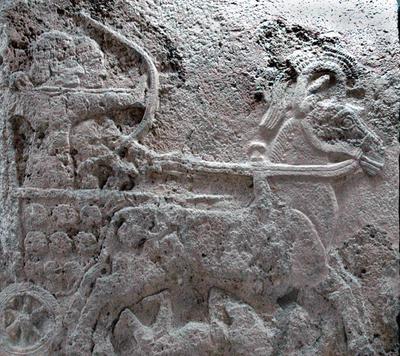
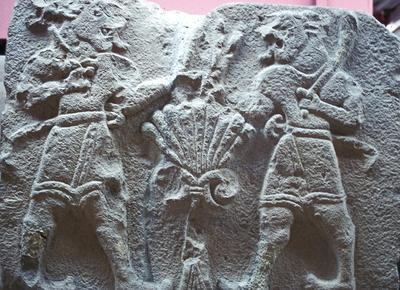
Figure 1: dosseman: Arrows point to plasma damage. Fig.1a looks like it was just completed by a sculptor. All would look like it were it not for plasma erosion. Fig.1c,d were severely scared by plasma. Reliefs demonstrate how material behaves. It is scalable. The scar on 1a (arrows) shows how plasma cut the five gaps in Selge Theater. Note, wheeled vehicles, horses and other domestic animals were already part of man's life.

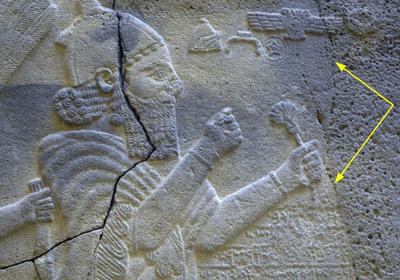
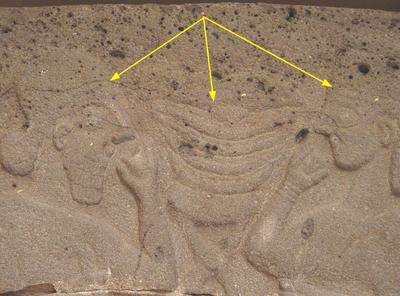
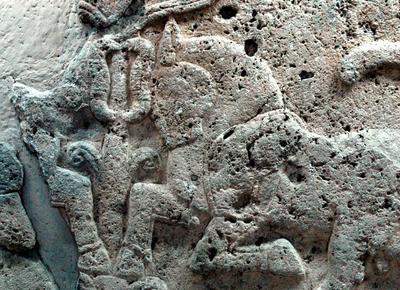
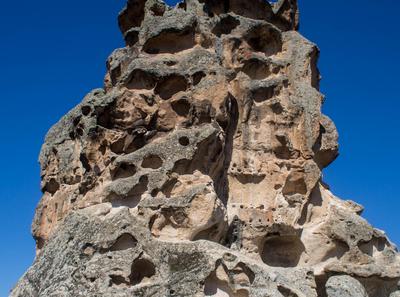
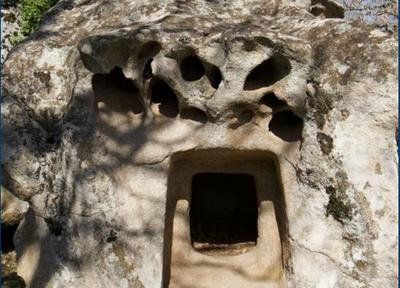
Figure 2: dosseman: Arrows point to plasma damage. Fig.1b, 2b have writing; Dick Osseman says 2b is Aramaic. All major languages existed before and survived the GTR. Fig.2a-b shows the precise pattern plasma left when it reduces rock. Pitting seen in 2e,f seems to indicate it forms clouds possibly composed of ball lightning. Image 2f is Donna Nuragica's photo.
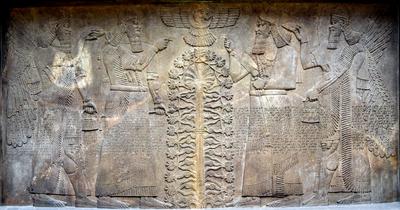
Figure 3: Wikipedia: The British Museum states that this is Ashurnasirpal II, a historic Middle eastern King. The panel is partially defaced with unattractive cuneiform script. One possible explanation is the person who had the panel created was not the one who had the panel inscribed.
All aspects in the above relief, fig.3, are Antecedent. For example, the hair styles, costumes, palmate pattern ('tree of life'), winged feature (top center), winged humans, arm-inside-garment and slight smile are Antecedent artistic expressions. They can be seen in the above reliefs or in previous articles on this site. Particularly, the slight smile also appears on iconic Egyptian and Greek Kouros statues. Labeling one individual as Ashurnasirpal II is just a literary contrivance to fit some imagined connection to Biblical history. It is a typical descent into fantasy masquerading as history.
Austen Henry Layard undertook his excavation in 1840's believing evidence he found fit Biblical history. He states Kouyunjik palace was built by Sennacherib's father. Even after the passage of 180 years, this preconceived and erroneous notion still pervades academic approach to the reliefs. Layard could not explain some evidence he discovered. One was the thin layer of pebbles found during his excavations. Another were 'colossal' and 'gigantic' reliefs broken by what means he could not identify. Some were twenty feet long and twenty high.1 They can be easily explained as being the consequence z-pinch appearances.
Modern man has the means to defeat the z-pinches when they return. However, neither the awareness nor will to confront the problem is in place. The evidence presented on this site puts paid to many established shaman notions promulgated by academics. They have created a fantasy house of cards. Of critical importance is the need for empirical research to understand what happened in the past. As one observer noted, steps in nuraghi were worn from use. This implies ZPAs made numerous appearances, probably over a thousand year period, necessitating people to seek refuge repeatedly in nuraghi. When the z-pinches return, it might be semaphore for a prolong period ZPA activity, and the science is known. Z-pinch plasma is a force that must be controlled. Unwillingness to challenge shaman narratives is symptomatic of the general hollowing out of Western intellectual tradition.
Discoveries among the ruins of Nineveh and Babylon; Project Gutenberg eBook; section 4.34-5↩︎

